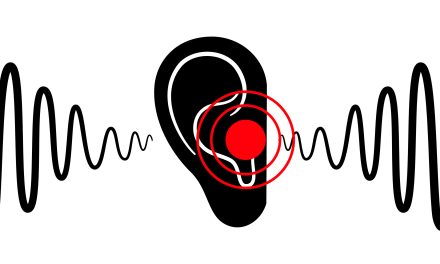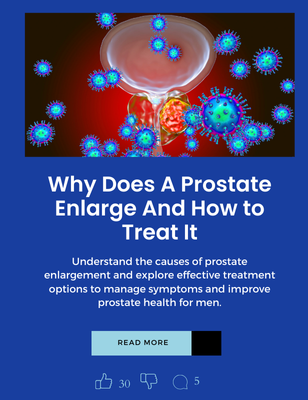Tinnitus is a common condition that affects millions of people worldwide.
Characterized by ringing, buzzing, or humming in the ears, it can vary from being a minor nuisance to a debilitating issue affecting a person’s daily life.
Roughly 10% to 15% of adults will experience chronic tinnitus at some point in their lives, with many cases remaining undiagnosed or untreated.

Despite its prevalence, many people are unaware of what tinnitus actually entails beyond its symptoms.
It’s important to understand that tinnitus is often associated with hearing loss, but not exclusively. Some people have tinnitus with normal hearing, while others experience hearing loss without the presence of tinnitus.
Key Takeaways
- 10% to 15% of adults experience chronic tinnitus.
- Tinnitus can occur even with normal hearing, affecting quality of life.
- Understanding and management are key to living with tinnitus.
What Is Tinnitus?
Tinnitus is often described as a ringing, buzzing, or hissing sound in the ears, known as a phantom sound.
It’s important to understand the different types and common symptoms that accompany this condition.
Types of Tinnitus
There are primarily two types of tinnitus: subjective and pulsatile tinnitus.
Subjective tinnitus is the most common form, where only the individual hears the noise, and it may occur due to problems in the ear or brain. This type can vary in severity and frequency, sometimes influenced by external factors such as loud noises or stress.
Pulsatile tinnitus, on the other hand, resembles a rhythmic pulsing in the ear that often matches the person’s heartbeat. This type of tinnitus may have an underlying vascular cause, such as changes in blood flow. It’s less common but can sometimes be detected by a doctor during a physical examination.
Understanding these types can help individuals identify their symptoms and seek appropriate medical care.
Common Symptoms
Tinnitus is characterized by several symptoms that may affect daily life.
The most noticeable symptom is a ringing in the ears, but it can also sound like buzzing, hissing, or whistling.
This sensation, known as a phantom sound, can occur intermittently or continuously and may affect one or both ears.
Patients might experience a sensitivity to external sounds, making it hard to concentrate or hear over the tinnitus.
Emotional responses such as stress or anxiety are also commonly linked with tinnitus, as the persistent noise can be distracting or bothersome. Recognizing these symptoms is essential for proper diagnosis and management of the condition.
Global Prevalence of Tinnitus
Tinnitus affects millions of people worldwide, showing significant variation based on age and region. The number of individuals experiencing tinnitus continues to rise, making it a significant global health concern.
Demographic Factors
Tinnitus is more common in older adults, with prevalence increasing with age. Studies indicate that men might be slightly more affected than women.
Age plays a significant role, as the condition becomes more prevalent in those over 60.
Variations exist in different countries. In Europe, for example, tinnitus prevalence ranges from 8.7% in Ireland to 28.3% in Bulgaria. These numbers reflect how characteristics like age and sex influence who gets tinnitus across different populations.
Epidemiological Data
Research shows that tinnitus affects 10-15% of adults worldwide. The global prevalence is comparable to that of major conditions like migraines.
Data from the United States and Europe show similar trends, but there’s less information for Asia and Africa.
Some regions in North America and Oceania report higher incidence rates, possibly due to lifestyle factors. The lack of comprehensive, standardized data across countries makes it hard to precisely determine global incidence rates, but the existing evidence illustrates a significant health burden.
Etiology and Risk Factors
The causes and risks associated with tinnitus vary widely. Factors such as hearing loss, lifestyle choices, and environmental exposures all play crucial roles in its development. Understanding these elements can help one grasp how tinnitus emerges and persists.
Hearing Loss and Tinnitus
Hearing loss is a significant risk factor for tinnitus. Damage to the inner ear’s hair cells can lead to both conditions, as they are closely linked.
Older adults often experience hearing loss due to age, which can increase the likelihood of tinnitus.
Certain medications, known as ototoxic drugs, can also harm hearing and lead to tinnitus symptoms. These include antibiotics, cancer drugs, and high doses of aspirin.
Additionally, an ear infection may damage ear structures, potentially causing hearing complications and tinnitus.
Jaw pain or disorders, such as temporomandibular joint disorder (TMJ), can also affect auditory nerves, leading to tinnitus. Managing these underlying conditions can alleviate symptoms.
Lifestyle and Environmental Risks
Exposure to loud noise, especially occupational noise like machinery or loud music, is a common environmental risk factor.
Prolonged noise exposure can lead to irreversible hearing damage and increase tinnitus risk. Noise exposure remains a key concern for those in industries like construction and manufacturing.
High blood pressure, another risk factor, affects blood flow, potentially exacerbating tinnitus symptoms.
Reducing stress, exercising regularly, and following a healthy diet can lower hypertension-related risks.
Avoiding certain medications and managing existing medical conditions, such as diabetes, can reduce tinnitus risk.
Healthy lifestyle choices, such as wearing ear protection and reducing exposure to loud sounds, are effective preventive measures.
Tinnitus and Psychosocial Impact
Tinnitus can affect not just hearing but also mental well-being and daily life. The presence of chronic tinnitus often leads to increased psychological distress and difficulties in maintaining a high quality of life.
Mental Health Considerations
Chronic tinnitus is often linked to mental health challenges such as anxiety and depression.
Many individuals with severe tinnitus experience high levels of psychological distress.
This distress can be due to constant ringing or buzzing sounds that interfere with concentration and sleep. The impact of tinnitus perception often varies between individuals but is generally linked to significant emotional strain.
Issues like headaches, dizziness, and migraines can also accompany tinnitus, leading to further mental fatigue.
Mental health professionals often recommend therapies that focus on stress management and relaxation techniques. These methods aim to reduce tinnitus-related distress and improve overall mental wellness.
Support groups can also be beneficial, providing social support and shared understanding among those affected.
Cognitive behavioral therapy is another effective treatment that helps patients restructure negative thought patterns about their tinnitus experience.
Quality of Life Assessments
Tinnitus can greatly affect an individual’s quality of life.
The constant noise can lead to irritability, concentration problems, and reduced productivity at work or school.
Those with severe tinnitus may struggle with maintaining social relationships due to withdrawal from conversations or social settings where hearing is difficult.
The psychosocial impact of tinnitus can also create barriers to enjoying daily activities or hobbies.
Quality of life assessments for tinnitus patients often include evaluations of sleep patterns, emotional well-being, and social functions.
Interventions may involve sound therapy or hearing aids to mask tinnitus sounds, enhancing the ability to engage in daily activities.
Personalized coping strategies developed by healthcare providers can also aid in improving life satisfaction and reducing the pervasive impact of tinnitus. Regular monitoring and adjustments to treatment plans are crucial to address individual needs effectively.
Treatment and Management
Managing tinnitus often involves a combination of therapeutic approaches and technological interventions. While some strategies aim to lessen symptoms, others focus on helping individuals cope with the condition in their daily lives.
Therapeutic Approaches
Cognitive Behavioral Therapy (CBT) is a significant treatment option for tinnitus. This therapy helps patients alter their responses to the ringing and can improve quality of life.
Counseling is an important component, as it supports patients in managing stress and reducing the impact of tinnitus symptoms.
Tinnitus retraining therapy uses a combination of sound therapy and counseling. This approach helps the brain become less sensitive to ringing sounds.
Addressing underlying conditions like temporomandibular joint (TMJ) disorders can also aid in managing tinnitus, especially when these issues contribute to the severity of symptoms.
Technological Interventions
Various technological tools are available to assist in tinnitus management.
Masking devices produce sounds to help cover up the ringing. By wearing these devices, individuals can focus on external sounds rather than the internal noise.
Hearing aids boost external sounds, which can make internal sounds less noticeable. For those requiring more specific sound therapy, devices known as sound generators can produce tailored audio programs to help manage tinnitus.
Medications are generally not a primary option for direct tinnitus treatment. However, they can address contributing factors like anxiety or depression.
It’s essential for individuals to be cautious with caffeine, as it may exacerbate symptoms in some cases.
Research and Developments
Significant strides have been made in understanding tinnitus, focusing on recent studies and methodological advances that explore its prevalence and impact. These efforts help shape future treatment and management options.
Recent Studies
Research on tinnitus has expanded over the past decade, with numerous studies conducted to grasp its prevalence and characteristics.
A large increase in tinnitus research aims to identify how tinnitus affects different populations.
Observational studies often utilize databases like PubMed-MEDLINE and Embase to gather data, leading to findings on tinnitus’ pooled prevalence. These studies help reveal variations in tinnitus experiences across different demographic groups, contributing valuable insights into how this condition affects diverse populations.
Systematic review and meta-analysis have played crucial roles in assessing findings across multiple studies, providing a comprehensive understanding of tinnitus patterns and risks.
Methodological Advances
Recent methodological advances have enhanced the accuracy and scope of tinnitus research.
Umbrella reviews combine data from various types of research, offering a broad overview of the current understanding of tinnitus.
Improved methodologies have allowed researchers to better analyze population characteristics and assess tinnitus’ impact. Techniques have evolved to correct biases and refine data gathering, which leads to more reliable results.
These advancements support a more detailed understanding of tinnitus phenomena, facilitating the development of targeted therapeutic approaches and improved patient outcomes. Through methodological innovation, researchers continue to expand the knowledge base, offering hope for more effective tinnitus management strategies in the future.
Understanding the Numbers
Tinnitus affects a significant number of people worldwide. This section examines how common tinnitus is and what trends can be seen in data from various studies and surveys.
Prevalence and Incidence Measurements
Prevalence refers to how many people have tinnitus at a given time. According to studies like the National Health Interview Survey, tinnitus prevalence is widespread but varied.
Surveys have shown that millions suffer from ringing or buzzing in their ears, with some studies suggesting that up to 15% of the population is affected. Prevalence estimates differ due to differences in research methods, sample sizes, and the way tinnitus is defined.
Incidence, on the other hand, measures new cases over a specific period. This helps determine how frequently tinnitus develops. Differences in recording techniques impact the results, causing variations in reported rates. Some regions may report more cases due to better diagnostic facilities.
Statistical Analysis and Trends
Statistical methods offer insights into tinnitus patterns. Meta-analytic models aggregate data from various studies, providing broader perspectives. These analyses help identify factors such as age, gender, and environmental noise exposure.
Health surveys and longitudinal studies are crucial for spotting trends. For example, older adults tend to report higher prevalence, possibly due to age-related hearing loss.
Trends also show that tinnitus awareness and reporting are increasing as more people seek medical advice. Some regions display higher rates due to urban noise, underlining the importance of targeted interventions for noise reduction. Analyzing these patterns helps in developing therapeutic strategies and policy planning.
Preventive Strategies
Preventive strategies are vital for reducing the incidence of tinnitus, especially among young and middle-aged adults.
Hearing protection is crucial for individuals frequently exposed to loud noise environments, such as concerts or noisy workplaces. Using earplugs or noise-canceling headphones can significantly limit damage to the ears.
Public awareness campaigns can educate about the risks of noise exposure and promote safer listening habits.
Early screenings could help identify those at risk, particularly younger populations. For individuals with existing hearing concerns, routine check-ups can prevent further deterioration.
Policy Implications and Recommendations
Effective health policy must prioritize tinnitus as a chronic condition affecting quality of life.
Policies should ensure that hearing protection becomes a standard safety regulation, helping to lower noise-induced tinnitus cases.
Healthcare systems need to offer specialized programs that focus on long-term management, including counseling and support for acoustic neuroma patients.
Training healthcare professionals to recognize signs of tinnitus early can lead to quicker and more accurate diagnoses.
Increased funding for research on medications and therapies will drive innovations in treatment.
By investing in such initiatives, policymakers can improve outcomes and reduce the burden on healthcare systems.
Frequently Asked Questions
Tinnitus is a condition that affects millions of people worldwide, with varying causes and impacts. Treatments range in effectiveness, and people often have questions about what they can expect when dealing with this condition.
What percentage of the global population is affected by tinnitus?
Approximately 10-15% of the global population experiences some form of tinnitus. This condition can range from mild to severe, impacting daily life and mental well-being.
What are the most effective treatments for tinnitus?
Effective treatments often include sound therapy, cognitive behavioral therapy (CBT), and tinnitus retraining therapy (TRT). These methods help reduce the perception of tinnitus and improve the quality of life for sufferers.
Can individuals fully recover from tinnitus?
While many people learn to manage their symptoms effectively, full recovery can vary. Some individuals may experience a decrease in symptoms over time, but complete recovery isn’t guaranteed.
What are the primary causes of tinnitus?
Tinnitus can result from prolonged exposure to loud noise, ear infections, or age-related hearing loss. Other causes include earwax buildup, certain medications, and health conditions such as hypertension or Meniere’s disease.
Do a majority of tinnitus sufferers find ways to manage their condition?
Many individuals with tinnitus find successful ways to manage their symptoms. Coping strategies, alongside medical treatments, can significantly affect how one experiences the condition.
What is the prevalence of tinnitus among different age groups in the United States?
In the United States, tinnitus is more prevalent among older adults. Nearly 30% of those over 65 report experiencing tinnitus symptoms, compared to around 8% of young adults.

















